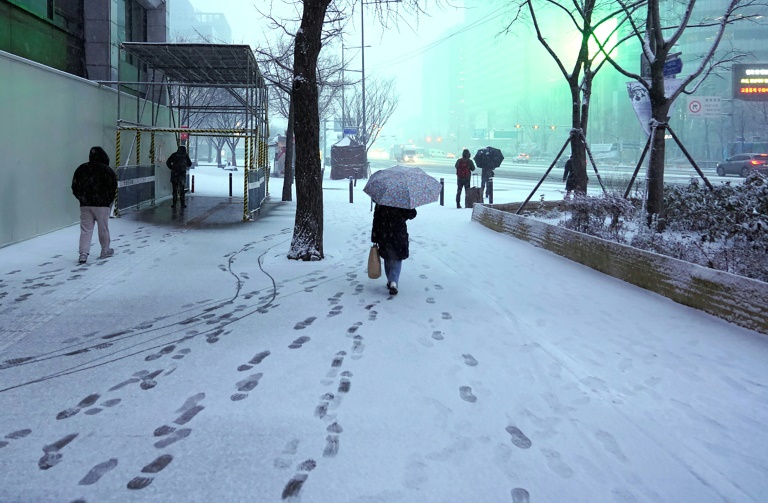I know a man whose favourite restaurant is Costco. He goes on birthdays and special occasions, starting with a browse of the free samples – a schmear of cream cheese on a tiny cracker, perhaps a mouthful of sugar-free brownie – before settling down at the food court for a £1.50 hotdog. I think of him every time I walk into Costco, which I do every couple of months, less because I need something, more because I feel drawn towards it as if a bright light. Daffodils and mountain ranges have had their poems, but few have dared, few have found the language to describe in rhyme the quiet majesty of a wholesale supermarket. It’s as if it has its own brand of affordable sun here: slightly diluted, but very moreish and you swim through it behind a tractor-sized trolley full of crisps.
For those not yet lucky enough to be invited as a cardholder’s plus one, you can dip in via a documentary that graduated recently, somehow, from Channel 5 to Netflix. I’m unclear exactly who the audience is for this kind of show, a 40-minute advert for the cash and carry, but I applaud and appreciate the effort, and under my breath offer a brief, “Good for them.” While a typical documentary like this might take you behind the scenes at a factory and show, perhaps, the making of nail varnish or a Magnum Mini, here we simply trawl the aisles and marvel at massive prosecco. Experts exclaim at the value of ketchup, tell you how the shop makes its money (membership), list the bestsellers (loo roll) and what to avoid (huge boxes of perishable fruit). I watched the show at 1.5 speed and the effect was something like sitting next to a regional aunt at lunch. But it has none of the thrill, none of the disorienting glamour I’m afraid, of stepping inside a Costco yourself.
And walking through these grand warehouses, I have noticed a new type of customer here, alongside the restaurateurs, with their 2,000 cans of coke and the families with enough toilet paper to service four outbreaks of even the current norovirus. These new customers are highly groomed young women, who swish rather than walk. These are the storage fanatics, who have been radicalised towards extreme organisation by influencers online. You will have seen the videos – manicured hands decant cereal into a tall plastic jar, or stack endless juice boxes into a clean fridge drawer, or pour dishwasher pods into a clear plastic container.
The sounds are just as mesmerising: the soft click of lids, the crunch of Oreos descending. A recent Atlantic article, “Home Influencers Will Not Rest Until Everything Has Been Put in a Clear Plastic Storage Bin”, described how the curatorial work of filling pantries and fridges, “is proof of a new, highly prized form of domestic mastery”, with the Kardashian family, their acrylic bins and infinite storage solutions, leading the way. There is an obscenely well-stocked Kardashian pantry you can walk through online, for example, that is so powerful it appears to have spawned its own religion. “One of the most enduringly intriguing things about the family is their years-long public enactment of the fantasy of owning everything you’ve ever wanted.”
Here is part of the allure of what I will call “restock culture”: first, the luxury of having 1,000 different kinds of dried fruit at your fingertips and then the luxury of being able to see them, right there on the shelf – a cool flannel on your feverish anxiety. At Costco, I watched a young woman heave catering-sized sacks of coffee pods and pasta into her trolley alongside a series of plastic boxes and I could picture the meditative scene when she got them home. The crunch. The skoosh. This is another part of the appeal: the illusion of control. You have bought a plastic place for everything, so everything has its place. A generation of preppers is emerging, attempting to decant and organise their current chaos, whether insecure housing, the environmental emergency or 200 hair elastics under a series of clicky lids.
The cash and carry has a similarly calming effect on me: no windows mean it’s never dark and there is no weather, and everything is here, so everything is fine. Behind the garden furniture section is baked goods – salmon sides glitter in refrigerated bins and printer paper spins opposite the rotisserie chickens. A person could happily grow up inside this warehouse, bedding down on picnic blankets and raising themselves to adulthood using a stack of Dummy’s Guide To… before they find, perhaps, a secret door.
For me, entering this shop feels a bit like going backstage at a life, a whole life. Here are the condoms, here are the nappies. Here are the thousands and thousands of teabags and joint supplements and secret diaries and headache pills and ham. Diet books, cut flowers, multipack meals for one. Here are the aspirational nuts and the yards of cheddar cheese and the hundreds of strangers all looking straight ahead and searching for something, or lots of things, cheap.
Email Eva at [email protected] or follow her on X @EvaWiseman






